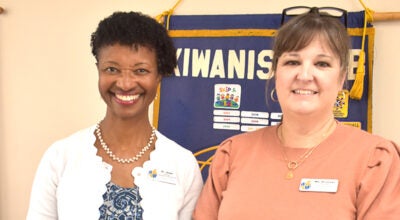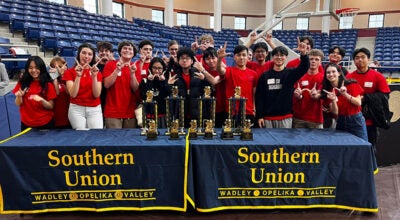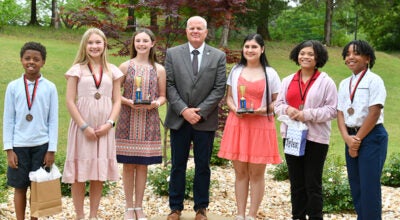Burel discusses road trips during Lunch N Learn
Published 9:00 am Saturday, March 10, 2018
VALLEY — America’s love of hitting the open road, going to far distant places and seeing many wonders in our big beautiful country didn’t happen over night. Dr. David Burel told a large gathering at Bradshaw-Chambers County Library’s Lunch N Learn program that the invention of the automobile was just the start. Cars had to be made affordable to average-income families, better roads had to be built and Americans had to see the automobile as being more than a means of getting to work and to the market; it was a means of wanderlust as well.
“In the early days roads were bad,” Burel said. “They were built without standards and most were either dirty or muddy.”
Roads were improved by the 1920s. Most of them were made of gravel, asphalt or concrete and some reliable, long-distance roads such as the Lincoln Highway or the Dixie Highway traversed entire regions of the country.
“These roads were clearly marked, and there were safe places to stop for the night, to gas up and to find places to eat,” he said.
In this era, the practice of auto camping began. “People could pack what they needed and stay overnight,” he said. “It was trendy and popular.”
At least it was with the travelers.
Firmly-rooted townspeople who had no urge to hit the open road took a dim view of those who did. They disparagingly called them tin can tourists. “They were thought of as gypsies and vagabonds,” Burel said, “the kind of people you didn’t want staying for long in your town.”
Those who loved auto camping brushed it off. Some event put TCT (for tin can tourists) logos on the front of their car.
“By1930 you could get from New York to Florida by car without having to camp one time,” Burel said. “There were places to stay, gas up and eat all along the route.”
There was an enthusiastic quest to find ways of being at home on the road. “House cars were the first RVs,” Burel said. Shelter and transportation were fused for the first time,” he said.
The first ones weren’t very elegant. Some critics called them pig pens on wheels. House cars
were slow, bulky and difficult to maneuver. Demand for them never reached the point of mass pro
duction.
It was different, though, with the travel trailer. Unlike the house car, this went beyond what a handyman would do in his backyard. Manufacturers did well in making them as long as they didn’t break one cardinal rule – don’t make it too big to tow.
A man named Wally Byam did very well producing a travel trailer with the Air Stream name. “He wanted his travel trailers to get the attention of the three big auto makers in Detroit, but it didn’t,” Bural said. “He insisted that his trailers were for travel, not for living in.”
Some people did, however.
Magazines such as Popular Mechanics and Popular Science encouraged people to build trailers and offered advice on how to use them.
Travel trailer manufacturers embraced the theme of showing women driving their trailers in their ads. “They wanted to get across that they were safe, affordable and that anyone could drive it,” Burel said.
Some advertisers depicted travel trailers as hearkening back to America’s pioneer spirit. In fact, one company manufactured them under the brand name Covered Wagon.
Demand for travel trailers slowed down with the advent of World War II. Parts to make them went into war production and gasoline was rationed.
Interest in pleasure travel picked back up after the war. The original idea of the house car was reinvented in the form of the Winnebago. It changed again with the gas crunch of 1973. Manufacturers started making smaller campers.
In the 1930s there were as many as 500 different companies making recreational-type vehicles. Today, there’s a handful of them, a large number of them owned by one company, Thor Industries.
The RV appears to be here to stay. According to some studies, there may be as many as 100,000 people on the road at any point in time in RVs.
“The 193os was important to the tradition of the RV,” Burel said. “A legacy was established that continues to this day.”




